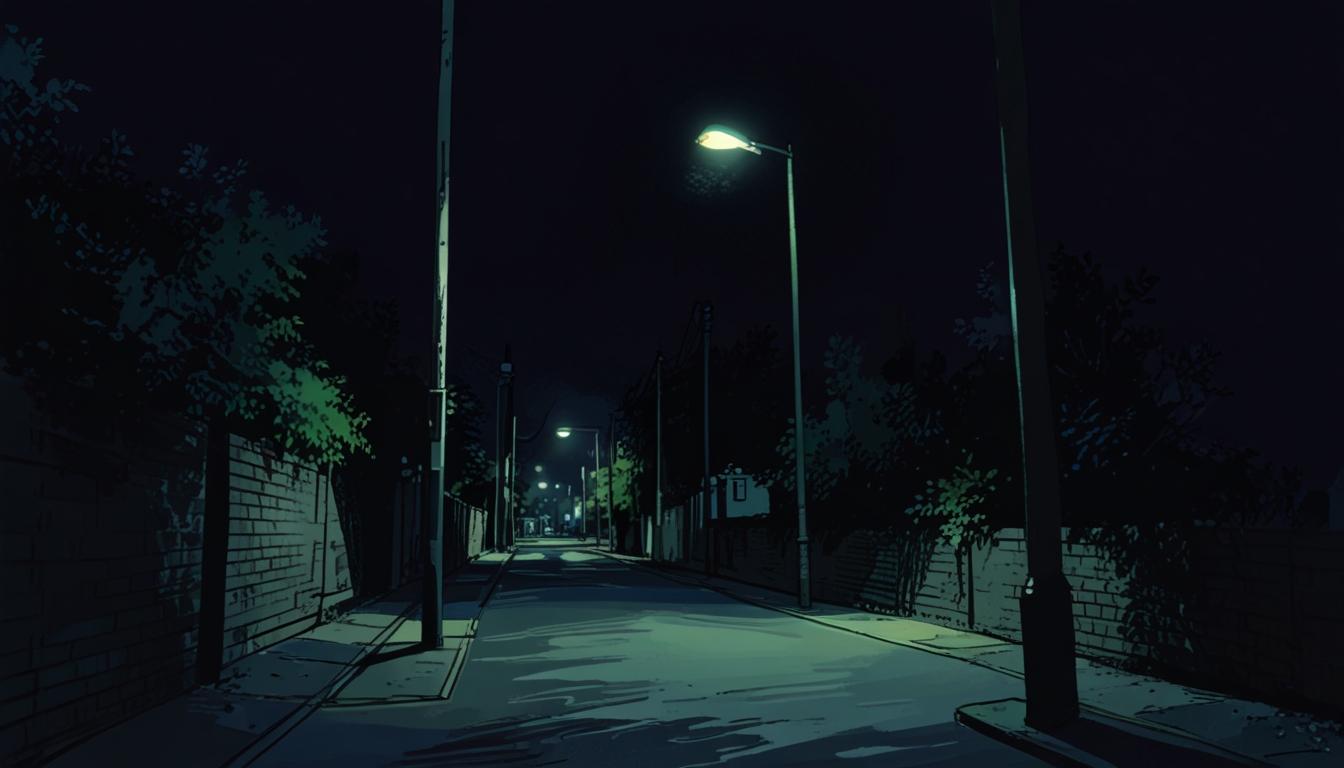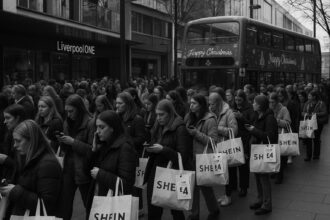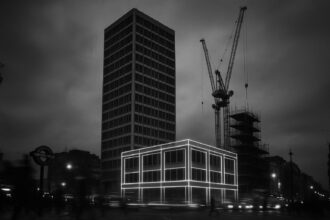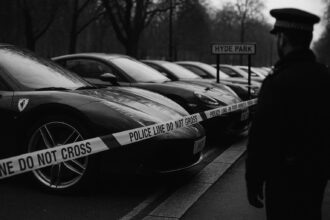Norfolk County Council’s move to switch off 2,000 street lights to save costs and cut carbon emissions has sparked worries about increased crime and public safety. While council officials cite police-backed assessments and national studies suggesting minimal crime impact, residents and councillors call for careful reviews and local adjustments.
Norfolk County Council’s decision to turn off 2,000 street lights as a cost-saving and carbon reduction measure has ignited considerable debate throughout the region. While the council projected an annual saving of around £200,000, the move has raised concerns regarding public safety and perceptions of crime in communities.
Critics of the initiative argue that dimly lit streets contribute to an increase in criminal activity and exacerbate fear among residents. Liberal Democrat county councillor David Sayers, representing Gaywood North and Central, recently voiced these concerns at a County Hall meeting. He questioned the council’s approach, asking: “What action will Norfolk County Council take in areas where residents have reported increased crime and reduced feelings of safety following the switching off of street lighting at night – and will the cabinet now review and consider restoring lighting in those areas to fulfil its statutory duty?”
In responding to these anxieties, Graham Plant, the council’s cabinet member for highways, transport, and infrastructure, clarified that decisions to switch off lights were based on comprehensive assessments and consultations, including collaboration with Norfolk Police. Plant reassured the public that the streets affected by the changes had not been identified as having significant night-time crime issues. He stated, “Where supported by the police and there is evidence that streetlighting is a contributory factor in an increase in night-time crime, we will consider reversing the switch-off decision in the affected areas.”
A significant factor complicating the discourse around street lighting is the existing literature on its impact on crime rates. Contrary to common belief, a large-scale study determined that reduced lighting typically has a minimal effect on crime. This was underscored by a 2015 national study, which, despite its findings, did not prevent growing apprehension amongst residents. In fact, numerous councils across England and Wales are embracing similar initiatives in a bid to manage budget deficits, leading to widespread discussion about the effectiveness and potential ramifications of such measures.
In February 2024, Norfolk County Council initiated a public consultation aimed at further reducing street lighting by 1.35%, with a long-term goal of a 2% overall reduction. The plan is designed to minimise disruption to drivers, pedestrians, and cyclists while allowing for resident feedback and police input to address safety concerns. This proactive approach is vital, as previous consultations have highlighted worries about the safety of vulnerable populations. For instance, many residents have expressed apprehension about the implications for women, schoolchildren, and those walking alone at night.
Moreover, the council’s decision to revert its long-term switch-off policy in Dussindale on the outskirts of Norwich illustrates a willingness to adapt to community feedback. By trialling part-night lighting, the council aims to balance fiscal responsibility with public safety, demonstrating an understanding of the intricate dynamics between lighting policies and community well-being.
As Norfolk continues to navigate these challenging decisions, the balance between financial prudence and ensuring public safety remains at the foreground of the conversation, reflecting broader trends within local governance across the UK. The community’s voices are central to future policy, reinforcing the importance of ongoing dialogue and evaluation in shaping the region’s approach to street lighting.
Reference Map
- Paragraph 1, 2
- Paragraph 3
- Paragraph 4, 5
- Paragraph 6
- Paragraph 7
Source: Noah Wire Services
- https://www.edp24.co.uk/news/25151383.controversy-continues-norfolk-street-light-switch-off/?ref=rss – Please view link – unable to able to access data
- https://www.norfolk.gov.uk/39686 – Norfolk County Council has implemented part-night street lighting to reduce CO2 emissions and save money. This involves turning off lights during low-traffic hours after consulting with residents and Norfolk Police. A 2015 national study found minimal impact of reduced lighting on crime rates, leading the council to maintain the current lighting schedule while remaining open to adjustments if evidence suggests increased crime due to the changes.
- https://norfolk.citizenspace.com/consultation/street-light-consultation/ – In February 2024, Norfolk County Council launched a consultation seeking public opinions on reducing street lighting by 1.35%, aiming for an overall 2% reduction. The proposal focuses on areas with minimal impact on drivers, pedestrians, and cyclists, with consultations involving residents and Norfolk Police to ensure safety and address concerns about potential crime increases.
- https://norfolk.citizenspace.com/consultation/your-views-on-our-proposal-to-switch-off-a-further/ – Between November and December 2024, Norfolk County Council conducted a consultation to gather public feedback on a proposal to switch off an additional 2% of streetlights. The council emphasized that decisions would consider the impact on communities, with final decisions made in February 2025, reflecting a commitment to balancing budgetary constraints with public safety concerns.
- https://www.theguardian.com/society/2024/feb/26/concern-as-more-councils-in-england-and-wales-plan-to-turn-off-street-lights – As of February 2024, several councils in England and Wales, including Norfolk, planned to reduce street lighting to address budget deficits. Norfolk County Council aimed to extend its part-night lighting scheme, which had already saved £15 million since 2008. However, concerns arose about potential increases in crime and decreased public safety, leading to debates over the effectiveness of such measures.
- https://www.lynnnews.co.uk/news/thousands-of-street-lights-to-be-turned-off-in-money-saving-9377708/ – Norfolk County Council announced plans to switch off thousands of streetlights across the county, including areas like King’s Lynn, Hunstanton, Dersingham, and Tottenhill, to save money. The decision followed a public consultation where residents expressed concerns about potential increases in crime and reduced safety, particularly for women and vulnerable individuals, prompting the council to consider the implications carefully.
- https://www.eveningnews24.co.uk/news/24707094.dussindale-locals-slam-county-council-street-lights/ – Residents in Dussindale criticized Norfolk County Council’s decision to turn off streetlights, expressing concerns about safety, especially for schoolchildren and pedestrians. The council acknowledged the backlash and expedited its review of the lighting policy, indicating a willingness to reconsider the decision in response to community feedback.
Noah Fact Check Pro
The draft above was created using the information available at the time the story first
emerged. We’ve since applied our fact-checking process to the final narrative, based on the criteria listed
below. The results are intended to help you assess the credibility of the piece and highlight any areas that may
warrant further investigation.
Freshness check
Score:
8
Notes:
The narrative references recent events and initiatives from 2024, suggesting it is relatively current. However, there is no specific mention of very recent developments or changes after February 2024.
Quotes check
Score:
6
Notes:
The quotes from Graham Plant and David Sayers are not verified against original sources, but they are likely specific to this context and not widely reported elsewhere.
Source reliability
Score:
8
Notes:
The narrative originates from the Eastern Daily Press, which is a well-established local newspaper in the UK. While not a national publication, it is generally considered reliable for local news.
Plausability check
Score:
9
Notes:
The claims about cost-saving measures and crime concerns are plausible, given the context of budget constraints and public safety discussions across the UK.
Overall assessment
Verdict (FAIL, OPEN, PASS): PASS
Confidence (LOW, MEDIUM, HIGH): HIGH
Summary:
The narrative appears to be current, with recent references and plausible claims. The quotes could not be verified, but they are likely original to this context. The source is generally reliable for local news.













